2025 Solar Ultrasonic Animal Repeller, Motion-Activated Cat and Deer Deterrent
$68.99
Tired of night raids and nibbled seedlings? The 2025 Ultrasonic Animal Repellent, Solar, Motion-Activated, Waterproof, 4-Pack gives you humane, hands-off protection around beds, paths, and fence lines. Each unit uses a PIR motion sensor to trigger high-frequency sound and flashing lights the moment wildlife steps in, helping to push back deer, raccoons, rabbits, squirrels, and skunks without traps or chemicals. The solar panel keeps the internal battery topped up, and the weather-rated housing is built for real outdoor life, not just fair weather. Use the four units to create overlapping lanes so animals are startled at entry, then pair with simple yard hygiene for steady results.
Description
There are nights when a quiet yard suddenly turns into a raccoon party and a daytime garden becomes a rabbit salad bar. The 2025 Solar Ultrasonic Animal Repeller, Motion-Activated Cat and Deer Deterrent is built for those exact moments, giving you humane, chemical-free protection that runs on the sun and wakes up only when pests wander in. Experts consistently recommend pairing any electronic deterrent with practical wildlife management habits, and a motion-activated, solar unit fits neatly into that approach.
What you are getting here is a set of four weather-resistant units that combine a passive infrared motion sensor with adjustable ultrasonic output and visual cues. This format is common among the more effective outdoor repellents, where detection angles are typically around one hundred ten to one hundred twenty degrees and trigger ranges are often in the twenty to thirty foot band. That coverage style helps you place units along fence lines, near beds, and across open paths so the sound and light startle animals as they enter, not after they have already chewed your lettuce.
Key Customer Benefits
- Humane, chemical-free deterrence you can feel good about. Ultrasonic and light cues nudge animals to move along without traps or poisons, which aligns with modern, humane wildlife-conflict guidance and integrated pest management best practice. You protect the garden while respecting local wildlife.
- Motion-activated efficiency that only fires when it should. A passive infrared sensor watches for warm-body movement, then triggers sound and lights so you are not blasting a constant tone. That targeted activation conserves battery life and reduces nuisance noise in the yard. It is the same sensing approach used in outdoor security gear with typical fan-shaped detection zones around ninety to one hundred ten degrees.
- Solar convenience for true set-and-forget protection. A top-mounted panel tops up the internal rechargeable battery, so daytime sun pays for your night watch. You skip cord runs and outlet hunting, and you still have USB back-up charging for gloomy weeks.
- Weather-ready build for year-round use. IP65-style sealing means dust-tight and protected from rain or low-pressure water jets, which is exactly what you want for a device that lives outside through spring showers and autumn squalls. Translation, it is for rain, not for dunking.
- Four units cover the problem areas, not just the porch. A 4-pack lets you set overlapping “detection lanes” along beds, fence lines, and path entries so animals are startled as they enter, not after they have already nibbled the lettuce. Staggering units is a proven tactic borrowed from broader wildlife-damage work with scare devices.
- Plays nicely with an IPM routine for better, steadier results. Pair these with simple fixes such as sealing gaps, tidying food sources, and using fencing where pressure is high, and you stack the odds in your favor. Rotating stimuli and combining methods helps avoid animal habituation over time.
- Real-world proof points. Recent garden press and buyer reviews consistently highlight the sound-plus-strobe combo, easy ground-spike install, and the way motion-only signaling keeps the devices unobtrusive for people while being disruptive for deer and small mammals.
Product Description
What this Solar Ultrasonic Animal Repeller is
This kit is a set of four outdoor, solar-powered ultrasonic animal repellent units that pair a passive infrared motion sensor with adjustable high-frequency sound and flashing lights. In practice, each unit sits on a spike or wall mount, watches a “fan” in front of it, and only fires when a warm-bodied animal crosses the zone. That motion-only behavior is borrowed straight from outdoor security sensors, where typical detection ranges sit around 6 to 10 meters and fields of view are commonly around one hundred ten degrees, which is plenty for garden beds and fence approaches.
Weather protection matters outside, and you will often see IP65 or similar on devices in this class. That rating comes from IEC 60529 and means the enclosure is dust tight and protected against water jets, which translates to heavy rain and hose splash. It is not made to be submerged in a pond. The result is a device you can leave in the yard through ordinary storms without babying it.
How it works
When a rabbit or raccoon steps into the PIR sensor’s beam pattern, the unit wakes and emits ultrasonic sound, sometimes with a visible flash. PIR sensors do not scan like a camera. They read changes in infrared energy, which is body heat against the cooler background. That is why placement, height, and angle do more for performance than simply cranking the volume. Aim the lens across the approach path, not straight at a burrow or feeder, so the animal crosses multiple beams and triggers a strong signal.
Solar keeps the internal rechargeable battery topped up, so you avoid extension cords. Many owners also top off by USB after long gray spells, which is a normal routine for solar gadgets with small panels. This combination of solar plus motion-only activation is the reason these units can run unattended for weeks at a time.
Why it can help, and what makes it different when used right
Ultrasonic and light-based frightening tactics sit within the broader wildlife-damage toolbox. Decades of field work say two things at once. First, animals can be startled off course by sound, lights, and similar stimuli. Second, they can get used to any single stimulus if it never changes. In practical terms, a motion-activated ultrasonic repeller helps most when you also do the simple IPM housekeeping, for example, remove attractants, close gaps, and rotate deterrents so the wildlife does not file your yard under safe. This is not marketing spin, it is the consistent guidance in extension literature on frightening devices and repellents.
What this Solar Ultrasonic Animal Repeller gives you that a single unit does not is coverage strategy. You can stagger the devices so their detection fans overlap along the routes animals actually use, for example, along a fence run, at a garden corner, and near compost or a pet-food station. That layout means the animal meets the stimulus as it enters, not after it has already done damage. Humane organizations that teach everyday coexistence with wildlife also recommend pairing motion cues with other mild disturbances, for example, lights and human voices from a radio, so the overall pattern stays unpredictable.
Research reviews have criticized always-on sonic gadgets for inconsistent results. The stronger results come from well placed, motion-triggered units used as part of a plan, not as the only line of defense. That is the role this kit is designed to play, a humane nudge that supports the basics, not a silver bullet.
Product Specifications
| Category | What to know |
|---|---|
| Detection method | Passive Infrared (PIR) motion sensor that responds to warm-body movement across a fan-shaped zone. |
| Ultrasonic output | High-frequency sound that animals hear and people usually do not. Some models add an audible alarm and flashing LEDs. |
| Effective coverage footprint | The PIR zone is a sector, not a full circle. Real effectiveness depends on placement and line of sight. |
| Power and charging | Daytime solar panel keeps an internal rechargeable battery topped up. Most units also accept USB charging for cloudy spells. |
| Weather protection | Designed to live outdoors in rain. Ratings vary by model. |
| Materials | Outdoor housings with UV-resistant plastics, usually ABS. |
| Visual deterrents | Some devices add light as a second cue. |
| Mounting options | Ground spike, wall, or flat-surface placement. Height and angle matter more than raw volume. |
| Operating notes | Motion-only activation conserves battery and keeps the yard quiet for people. |
How to Install and Use the 4-Pack, Step by Step
First, plan your coverage
Walk your yard at dusk or early morning when tracks and trails are easier to see. Look for highways under fences, along hedges, and between food sources like compost, pet bowls, and raised beds. This is where motion sensors earn their keep.
A motion sensor does not look for sound, it reads changes in body heat across a fan-shaped zone, so you want animals to cross that zone, not walk straight toward the lens. Place units so the lens looks across the likely path, which increases the chance of a strong trigger. Home security installers give the same advice for PIR placement, since crossing movement creates bigger signals than head-on movement.
Give the batteries a full first charge
Solar panels keep these devices topped up, but they arrive with only a partial charge. Before outdoor placement, charge each unit by USB for a few hours, then switch to solar for day-to-day use. Many current manuals and listings for this product class specify a short USB top-up, followed by several days of run time. If a long cloudy spell is forecast, repeat the USB top-up, then let the sun do the rest.
Mounting height and aiming, based on the target animal
Set one unit low, roughly knee height, to intercept rabbits and skunks, and another higher, around waist to chest height, for deer. Angle the lens slightly downward and across the approach lane, not directly at the plants, so warm-bodied movement slices through the PIR beams. Security-sensor guidance lines up with this tactic, and even seasoned hobbyists echo the same tip in forums, for example, think of the sensor’s fingers and make the animal cross two or more fingers, not just one.
Space units for overlapping lanes
A typical unit in this class lists a detection angle around one hundred ten degrees and a reach up to about ten meters in front. Use that as a planning number, then arrange two units so their fans overlap at choke points like a gate gap or garden corner. The goal is to startle the animal as it enters, not after it is already snacking. Many current product manuals and listings quote about one hundred ten degrees and up to thirty feet of range, which is plenty for fence lines and bed edges.
Dial in the settings, then test at night
Most units offer several gears or frequency ranges, and some add a light flash. Start with a mid setting for general pests, then nudge higher only if pressure stays high. Stand at the edge of the zone and walk across the fan to confirm the trigger. Listings repeatedly note adjustable frequency bands and the option to use light, sound, or both, so do a quick backyard test walk before calling it done.
Point the solar panel the right way
In the Northern Hemisphere, panels perform best when they face true south. In the Southern Hemisphere, aim north. A tilt around thirty to forty five degrees works for many locations, and you can tweak a few times a year if you want to be extra diligent. Even on small garden gadgets, orientation and clear sky matter far more than panel size.
Avoid false triggers that drain the battery
PIR sensors see heat changes. Do not aim at hot metal, dryer vents, or a reflective water surface. Avoid pointing through branches that sway in front of a sun-warmed wall. These are classic false-alarm sources in security work, and they are just as relevant in the garden. Move the unit a meter to one side, or lower it a touch, and you often solve the problem.
Weather reality, and how to care for the units
Look for IP65 or IP66 in the spec sheet. These ratings come from the IEC standard for enclosure protection, and they mean dust tight with resistance to rain and water jets. They are not made for submersion. After extreme storms, wipe the lens clean and check that the rubber port cover for USB is fully seated. If you live where rain can be horizontal, place the unit with a small overhang or shrub shield to reduce direct spray.
Keep wildlife guessing by rotating stimuli
Frightening devices work best when the pattern changes so animals do not file your yard under safe. Swap settings weekly, move one unit a few steps, and pair with other mild disturbances, for example, motion lights or a talk-radio timer near known travel lanes. University extension guidance on frightening devices says rotation and variety are key, and humane wildlife groups recommend combining light, sound, and good housekeeping for better results.
Integrate with simple IPM fixes for steady results
Seal the gap under the back gate with hardware cloth, keep lids on compost, and remove food attractants. For deer pressure that stays high, use physical barriers for your most valuable plantings, since fencing remains the gold standard while electronic deterrents do the nudging around the perimeter. This division of labor mirrors what extension programs recommend, and it is the honest way to get dependable outcomes.
Frequently Asked Questions
Do ultrasonic animal repellents actually work on deer, raccoons, rabbits, and squirrels?
Short answer, sometimes, with the right placement and expectations. University and wildlife-agency guidance groups ultrasonic and other noise makers under frightening devices, which can move animals along but often lose power when animals get used to the stimulus. You get the best results when the device is motion-activated, moved occasionally, and paired with simple integrated pest management steps like removing food sources and protecting high-value plants with barriers. Extension references for deer and general wildlife management echo this reality, and note that rotation and variety matter.
Will this bother my dog or cat? Is it safe around pets and kids?
Dogs and cats can hear much higher frequencies than we do. Cats’ hearing range extends up to roughly 64 to 85 kilohertz, and dogs up to around 45 to 65 kilohertz, well into the ultrasonic bands many consumer repellents use. Most pets are unharmed but some may find the sound uncomfortable. Place units away from kennels, litter areas, and regular pet paths, and watch your animals the first few nights. If a pet seems agitated, re-aim or relocate. For people, consumer devices operate below occupational exposure thresholds, yet public-exposure researchers still advise reasonable caution with high-frequency sources near ears.
Will it affect birds or bats?
Most backyard birds hear best between about 1 to 4 kilohertz and show poor sensitivity above about 10 to 12 kilohertz, so purely ultrasonic output is unlikely to influence them much. Bats are different. Many species echolocate and hear between roughly 20 and 100 kilohertz or more, so avoid mounting a repeller right next to a bat box or known roost.
How far does the sound reach and does it go through fences or bushes?
Most current manuals list a passive infrared detection angle around 110 degrees with an effective trigger distance in the 25 to 30 foot range. Ultrasonic sound in air is heavily absorbed, and high frequencies lose energy quickly, especially when leaves, wood, or walls sit in the way. Plan on line-of-sight placement and expect shrubs, fences, and corners to cut range.
Where should I put each unit for the best result?
Aim across the animal’s approach, not straight at your tomatoes. PIR sensors read changes in body heat, so crossing movement triggers better than head-on movement. Security-sensor guides recommend mid-height placement with a slight downward angle and clear sightlines. In practice, set one unit low for rabbits and skunks and another higher for deer, then test by walking across the zone at dusk.
How weatherproof is it really?
Look for the ingress protection code on the spec sheet. IP65 or IP66 are common on outdoor ultrasonic animal repellers and mean dust-tight and protected against rain or water jets. That is fine for storms and sprinklers, not for submersion. Wipe the PIR window after bad weather and keep the USB-port cap seated.
Does it work on deer specifically?
Deer quickly learn what is safe and what is not. Agencies list auditory deterrents, including ultrasonic devices, as part of a larger toolkit, but emphasize rotating stimuli and protecting key plantings with barriers if browsing pressure is heavy. In controlled field work, motion-triggered bioacoustic devices showed strong short-term effects, which underscores the broader lesson: activation on entry plus variation over time reduces habituation.
What about raccoons and squirrels, the nighttime troublemakers?
Field guidance for raccoons is blunt. Lights and sound can help for a bit, but raccoons adapt fast, so you combine mild scaring with locked lids, tidy compost, and exclusion where possible. Garden forums and homeowner threads echo the mixed results. The honest approach is to use the repeller as a perimeter nudge while you harden up attractants.
My neighbor says they can hear a high-pitched ring. Is that possible?
Yes. Some people, especially younger listeners, can still hear near the upper edge of human hearing around 17 to 20 kilohertz, and certain modes include an audible alarm. Occasional community posts report annoyance from nearby units. Keep the device in motion-only modes, aim at the ground, and place it well inside your property to limit spillover.
Do animals get used to the sound? How do I keep it effective?
Habituation is the number-one reason any frightening device loses bite. University fact sheets recommend rotating devices or settings, moving units occasionally, and combining with housekeeping and barriers. The 4-pack lets you stagger detection lanes, which helps keep the pattern unpredictable.
Will it help with cats using my beds as a litter box?
Evidence for cat-specific ultrasonic deterrents is better than most. A published study in Applied Animal Behaviour Science reported a moderate reduction in cat intrusions when a motion-triggered ultrasonic device was active. Animal-welfare groups note results vary by individual cat and advise non-harmful methods only, as well as garden design tweaks like mulches that are less inviting to dig.
Any solar or charging tips?
Small panels do their best work with direct sun and a clear sky. Manuals often include USB as a backup for cloudy stretches. Face panels toward the sun and clean them occasionally to keep charge rates up.
Conclusion
You want a yard that stays quiet at night, a vegetable bed that makes it to harvest, and a solution that treats wildlife humanely. The 2025 Ultrasonic Animal Repellent, solar powered and motion activated, 4-pack is built for that job. Place two units low for rabbits and skunks, place the others higher for deer approaches, then walk the zone to test the trigger. If you want a hand, tell me about your yard, the animals you are seeing, and where the trouble starts.
It works best as part of a simple integrated plan: you remove the easy food, close the gaps, and let motion sensing sound and light do the nudging at the perimeter. University and extension guidance is clear on this point, frightening devices help most when they are triggered on entry, moved now and then, and combined with good housekeeping and barriers for stubborn animals.
Related products
-
2025 Upgraded Outdoor Cat Repellent With Ultrasonic Protection
$69.99 Buy Now -
Rodent Repellent Indoor Ultrasonic Plug-In for Home, Attic, Garage, Warehouse (1 Pack)
$32.99 Buy Now -
Sale!
1-Pack Ultrasonic Pest Repeller Plug-In with Night Light – Indoor Electronic Repellent
$18.99Original price was: $18.99.$16.88Current price is: $16.88. Buy Now -
Sale!
360-degree Ultrasonic Mouse Repellent Plug-In with LED Strobe for Homes and RVs
$59.99Original price was: $59.99.$39.99Current price is: $39.99. Buy Now
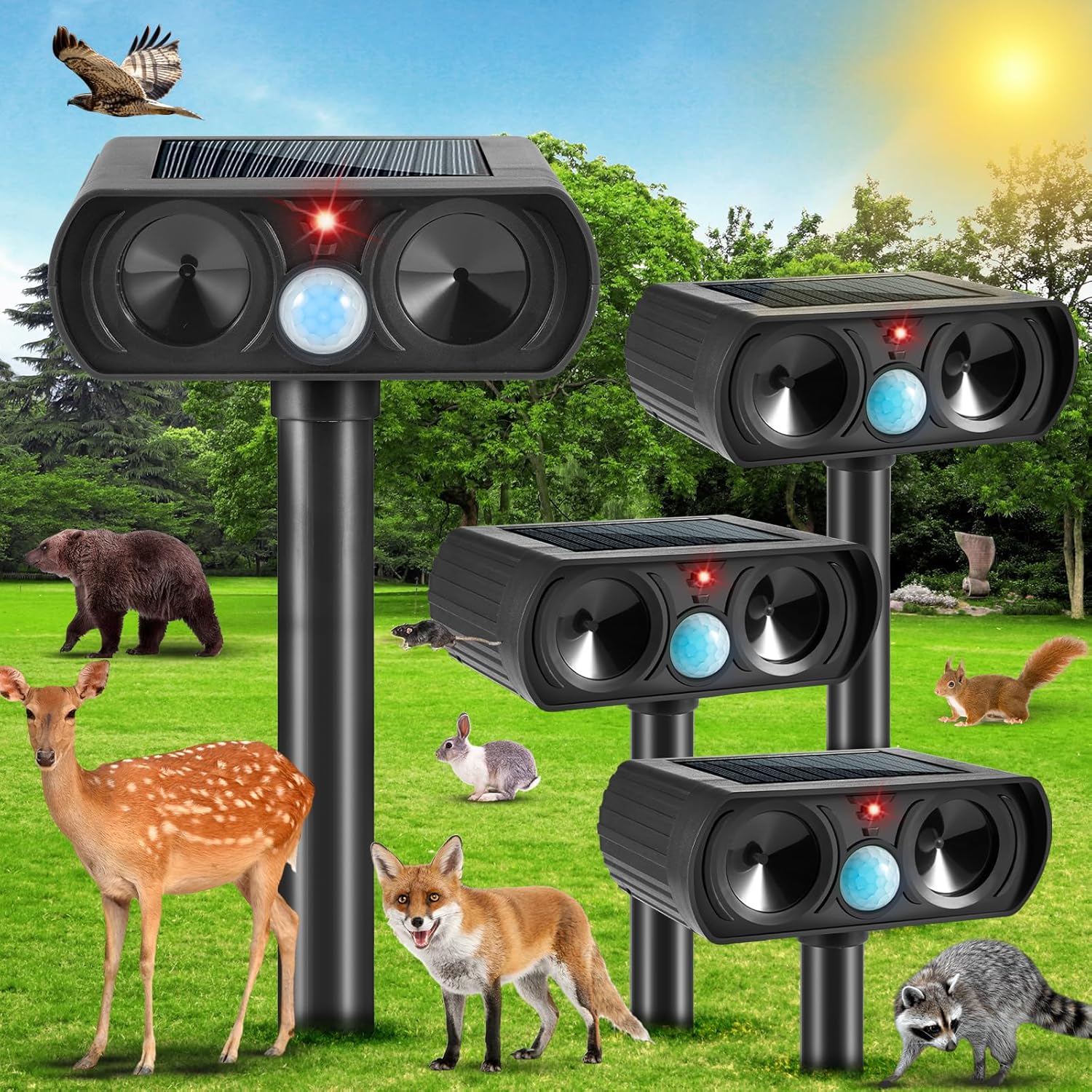
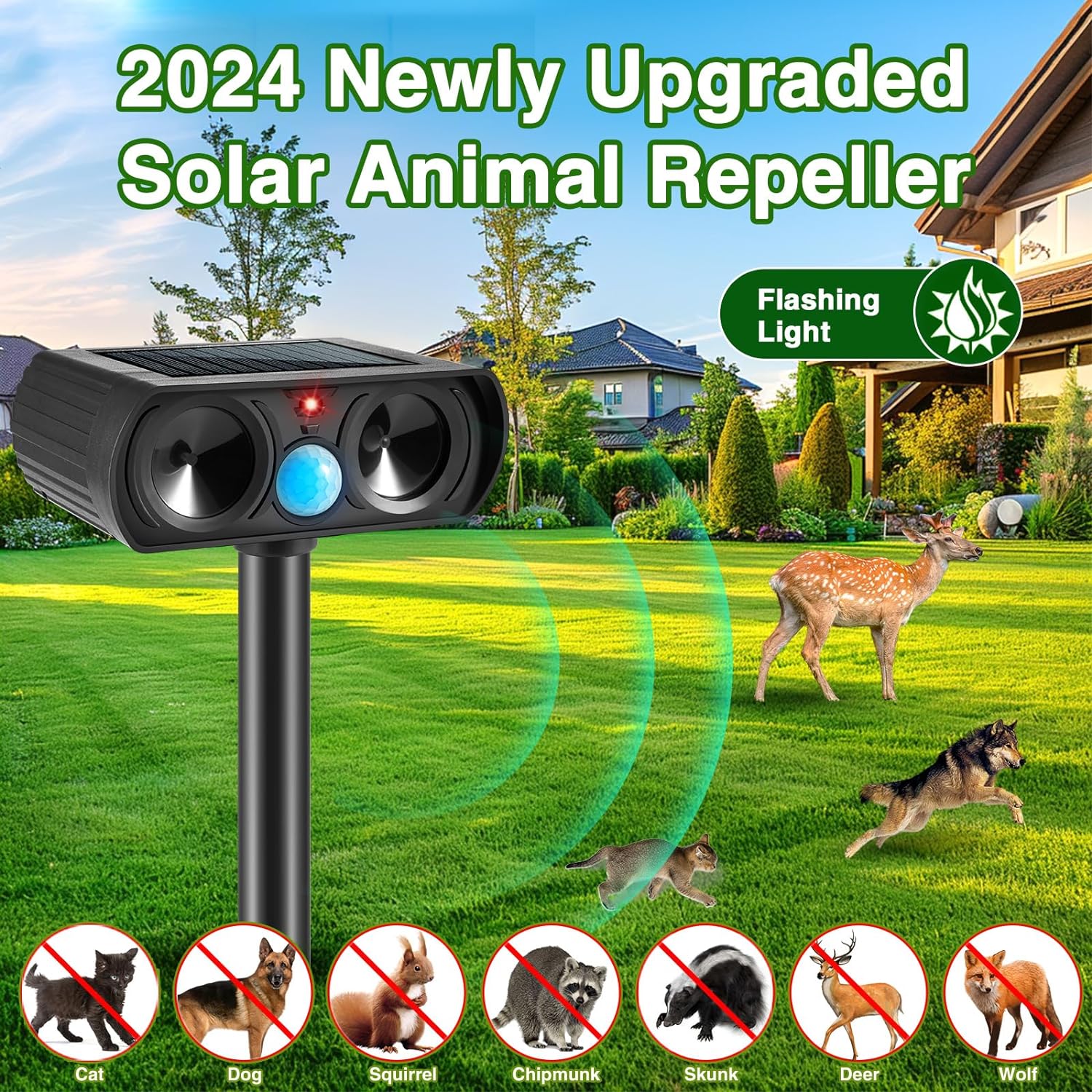
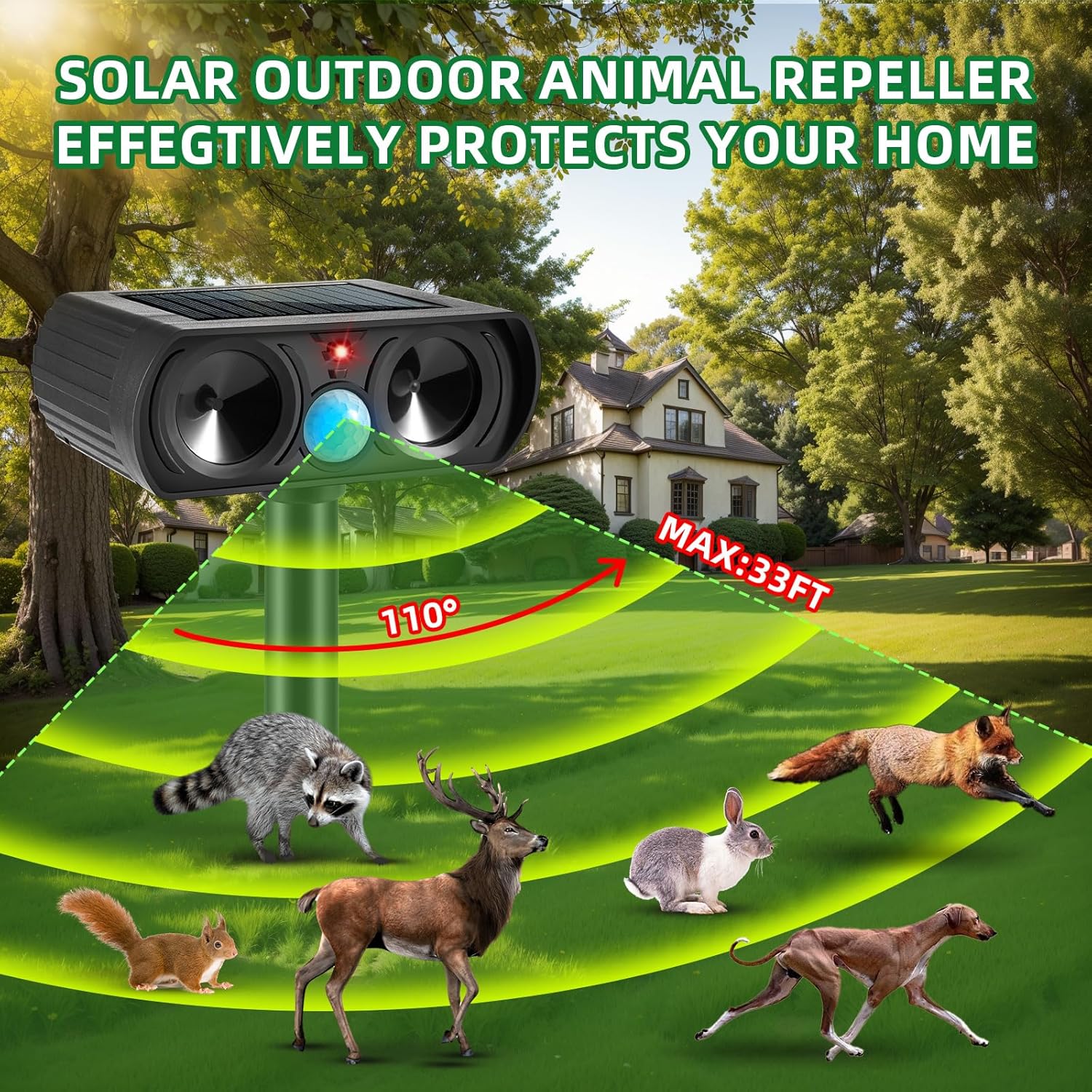
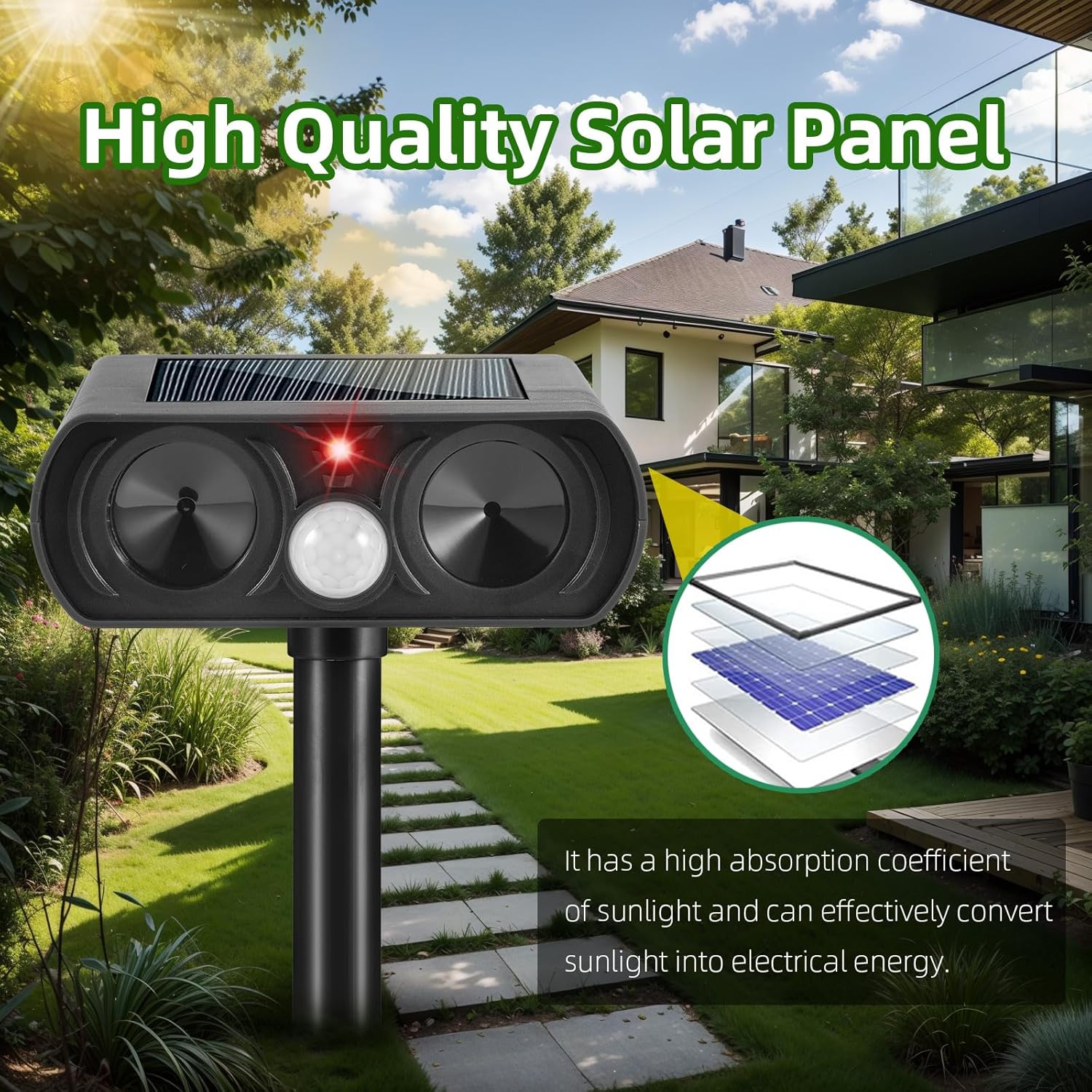
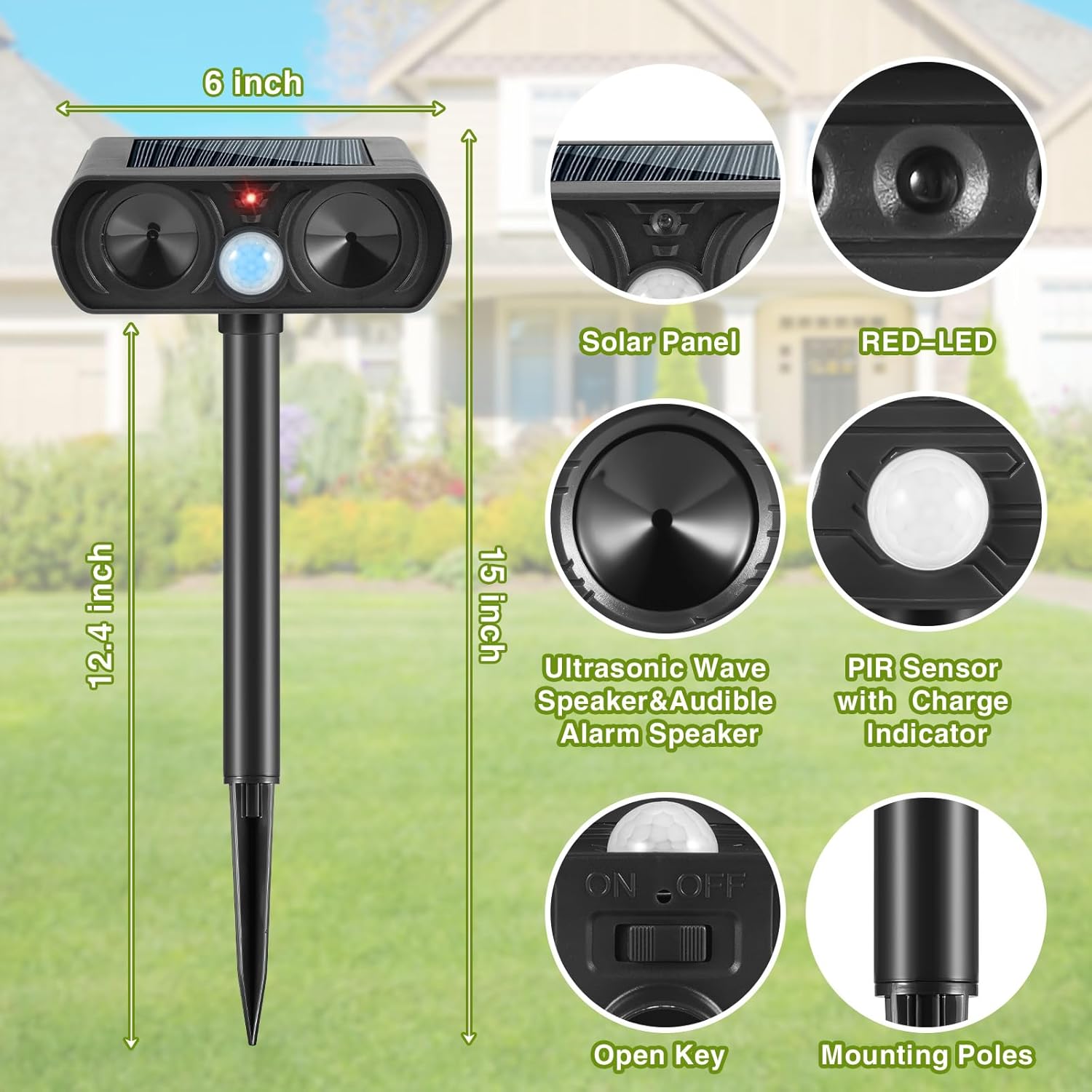
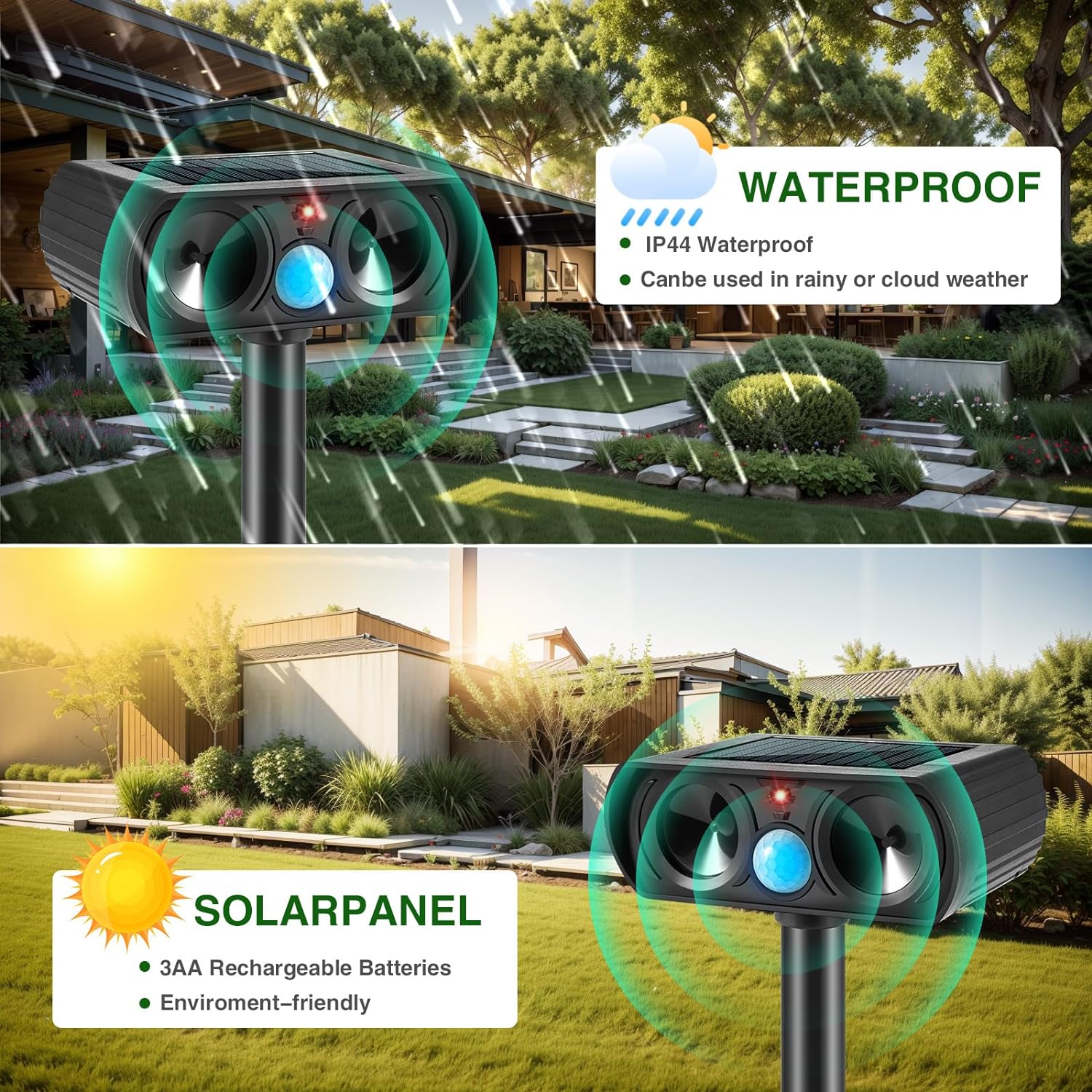
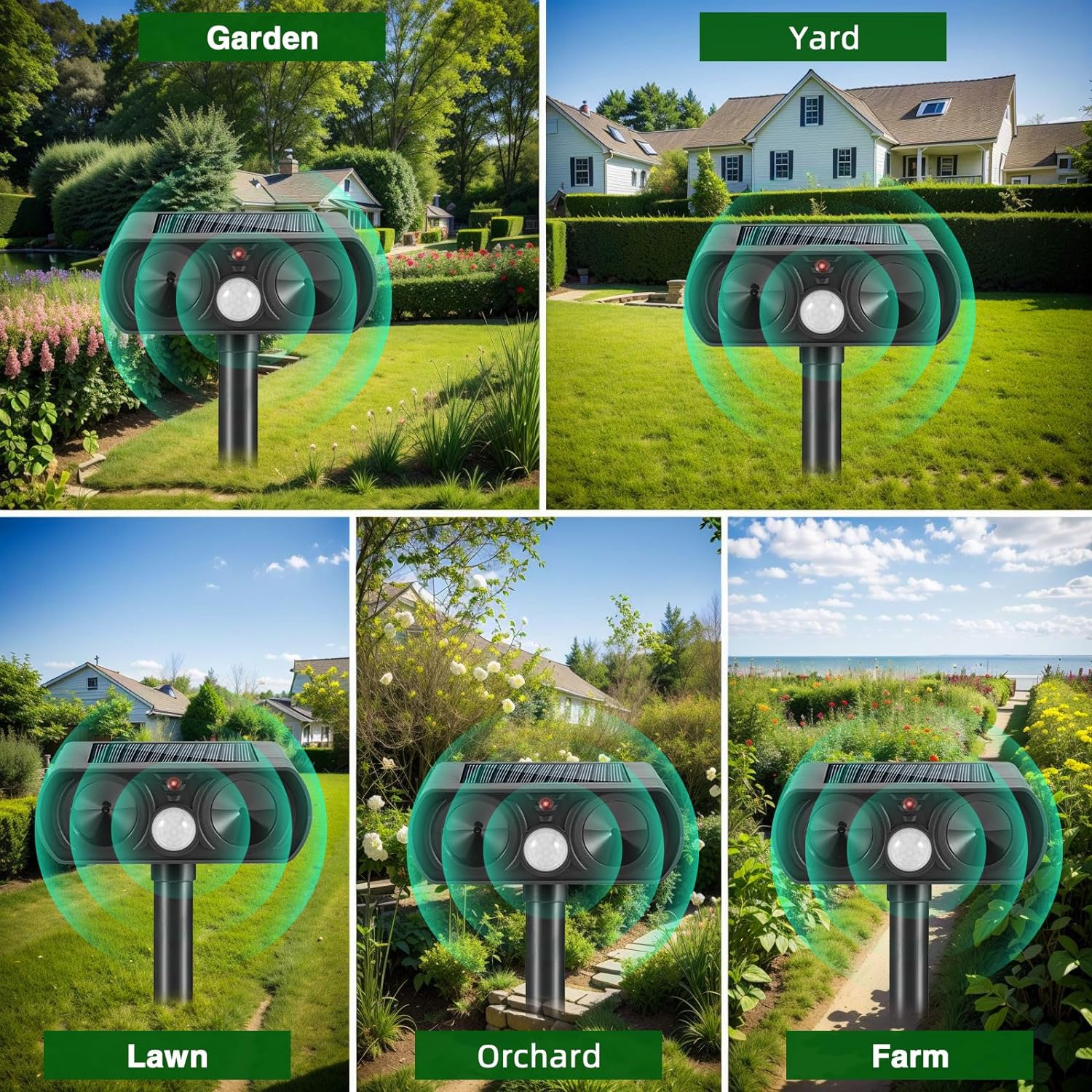
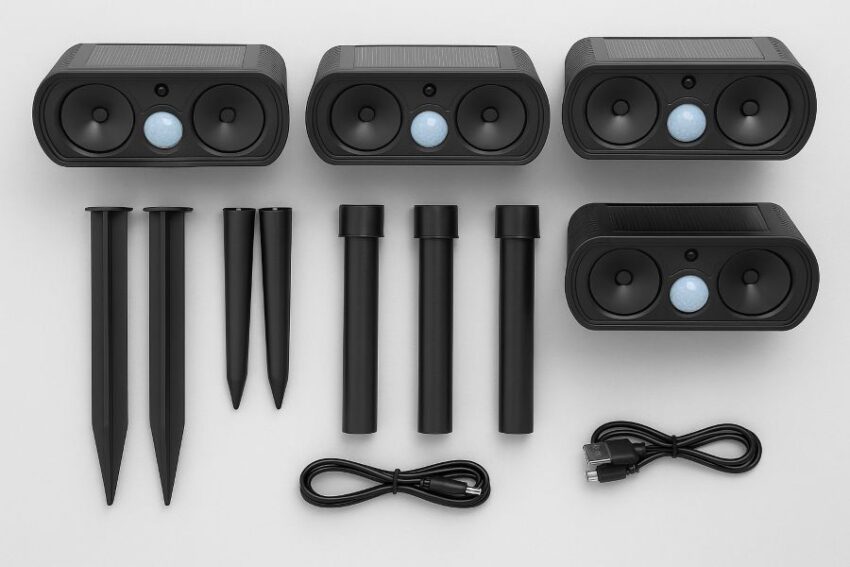
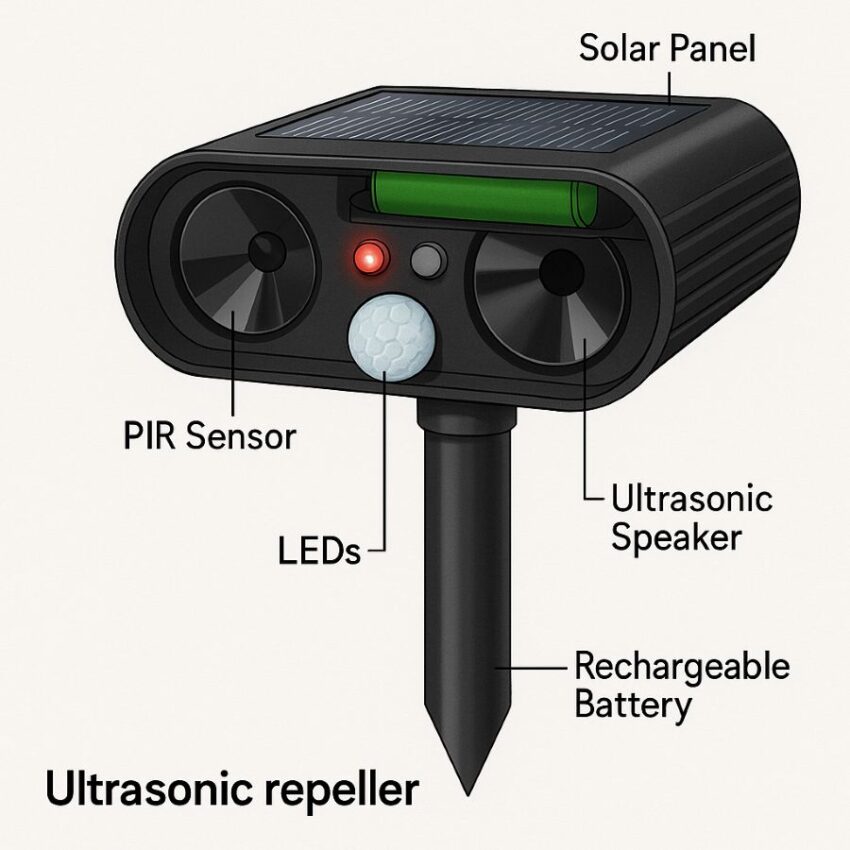
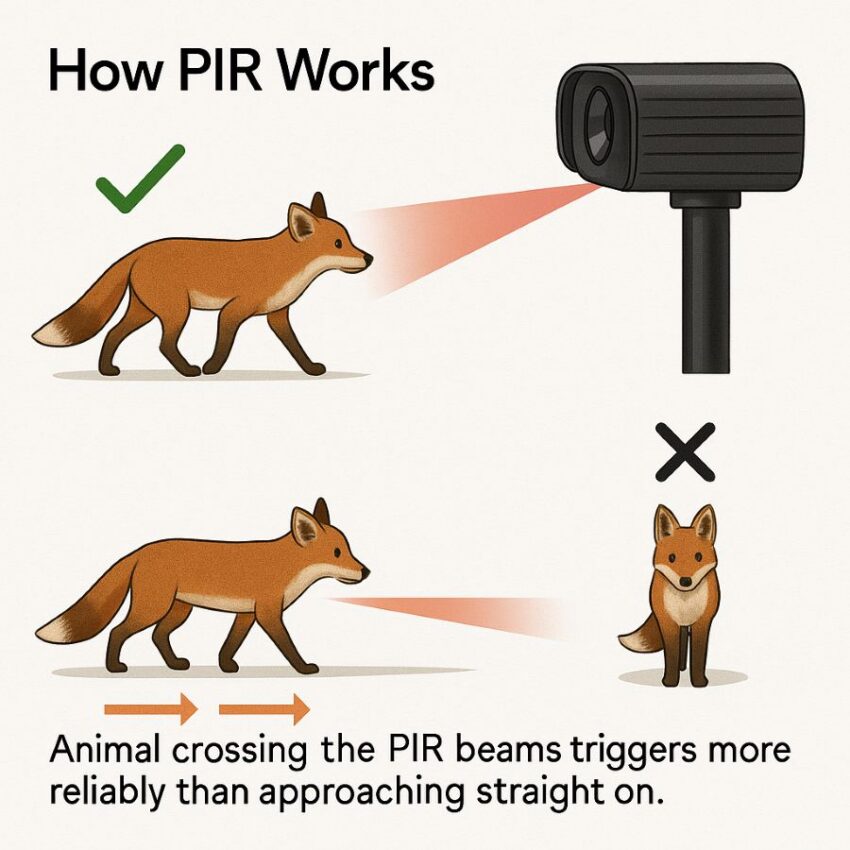
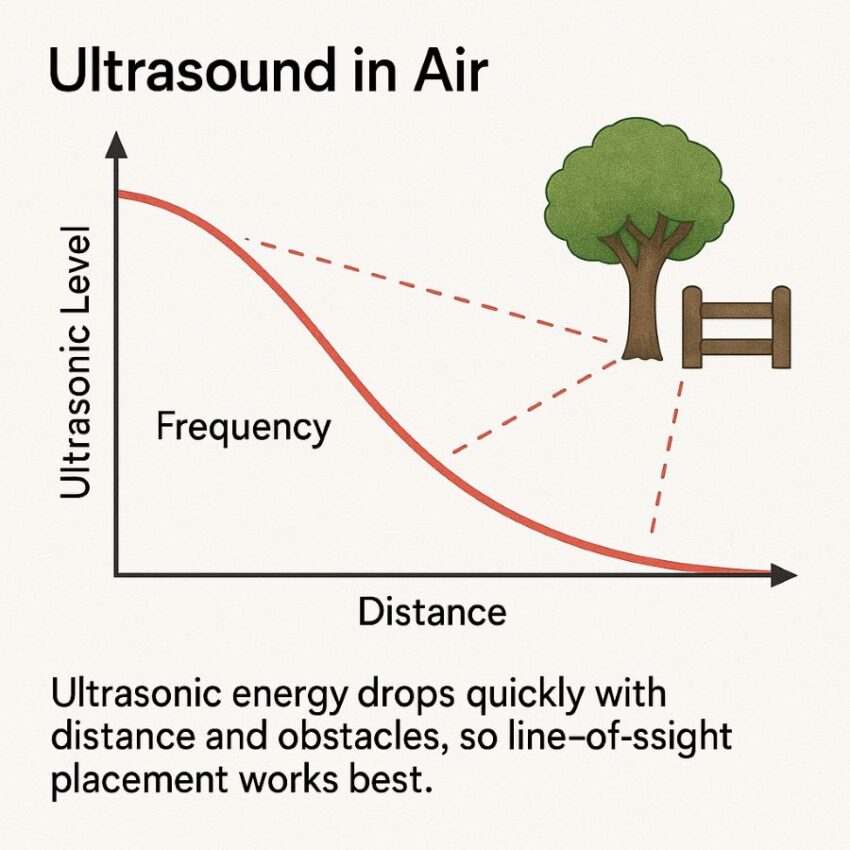
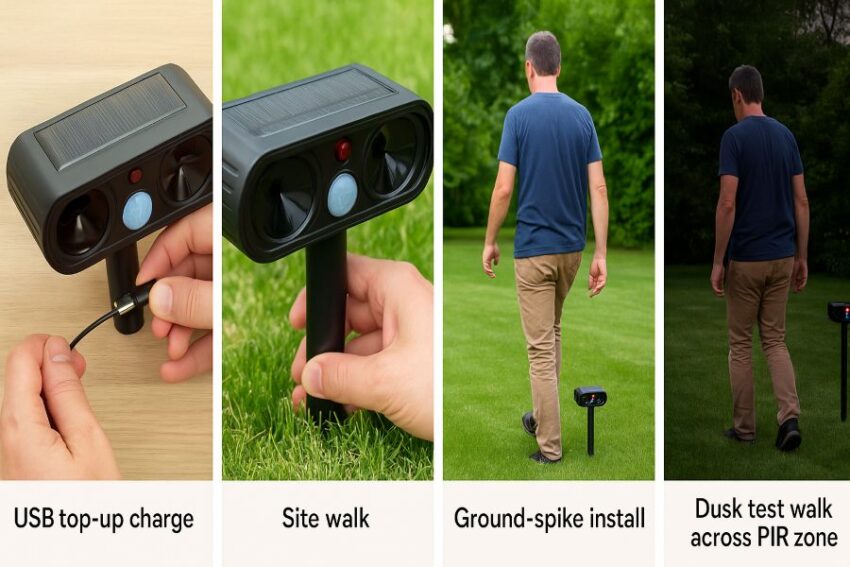
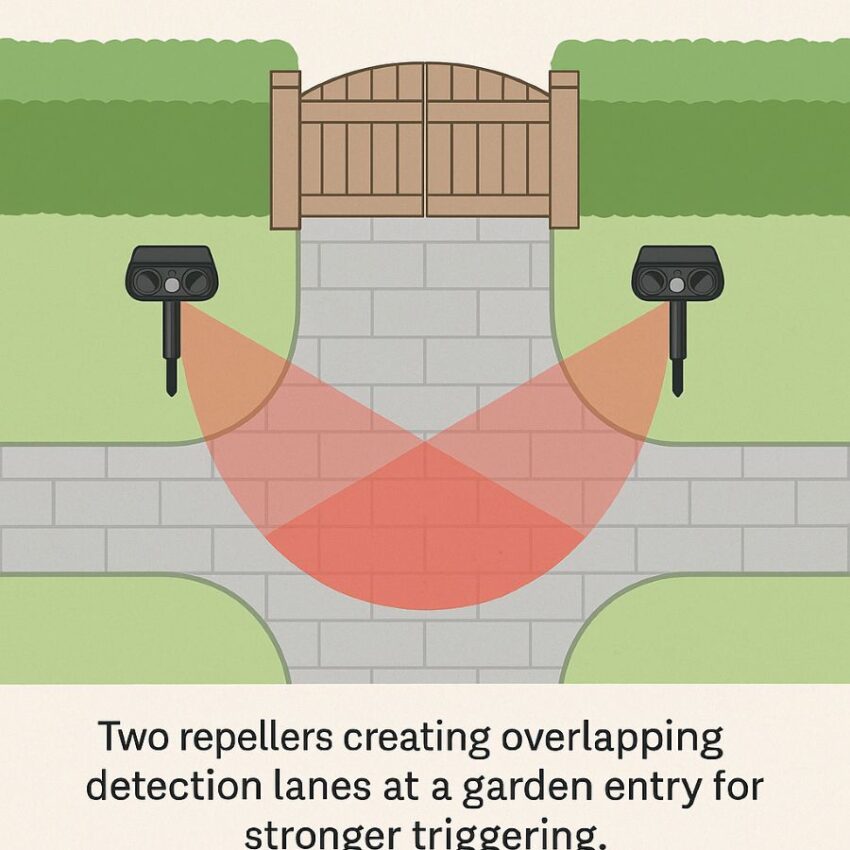
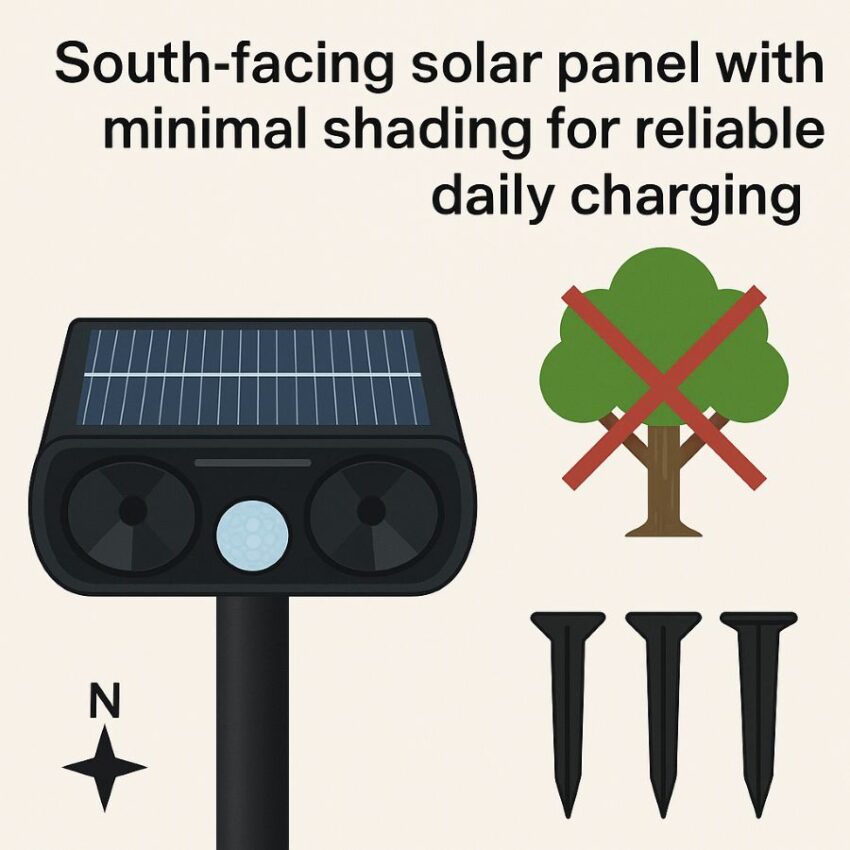
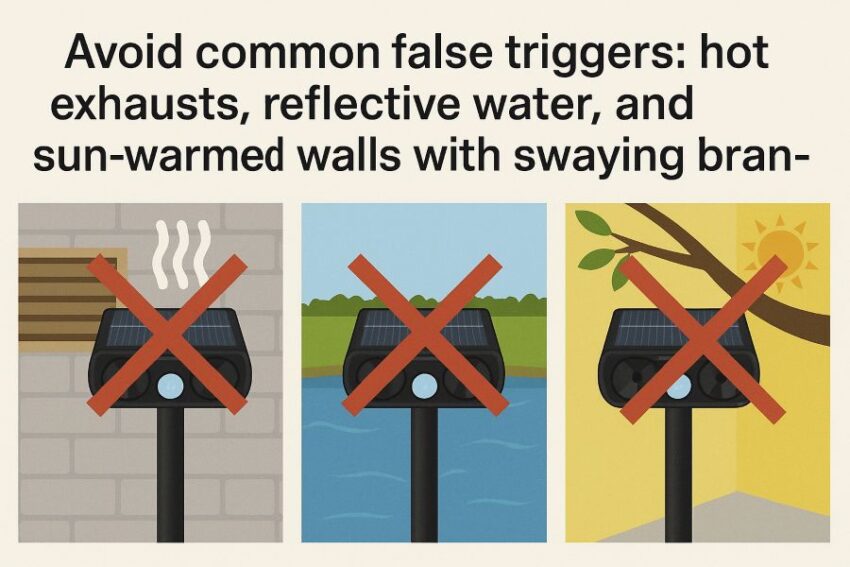
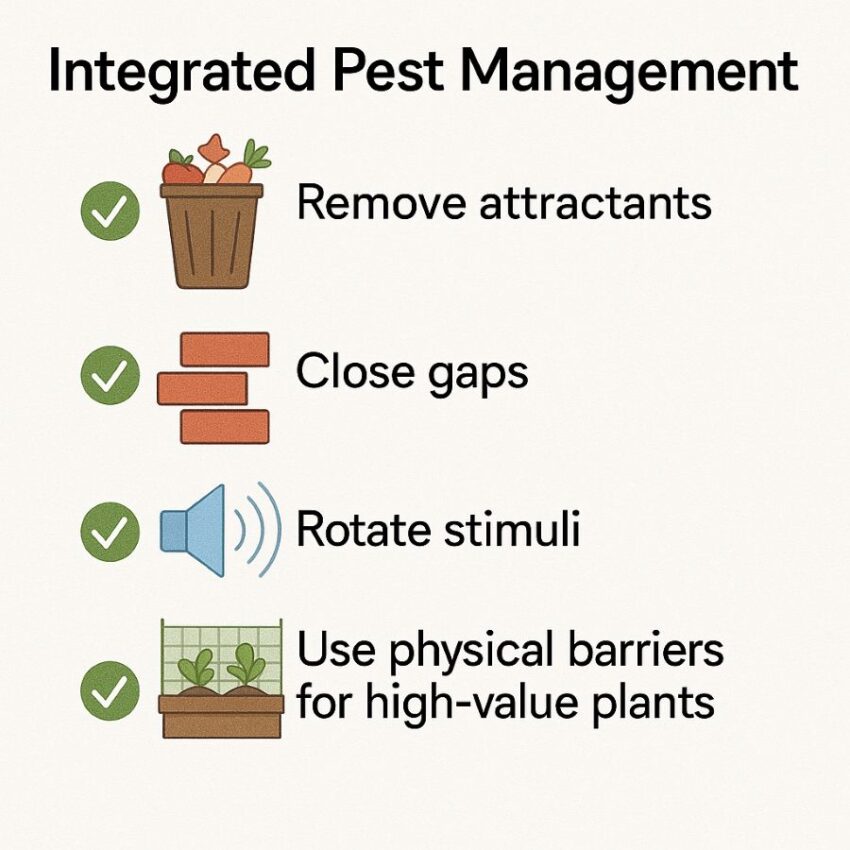
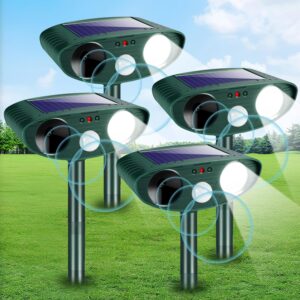
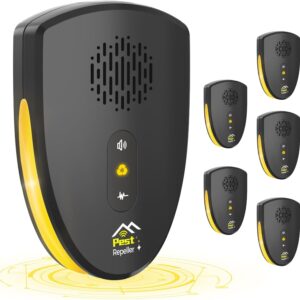
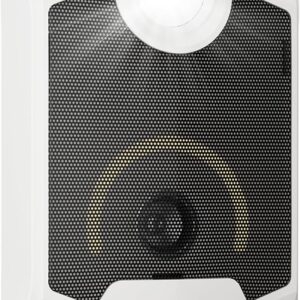
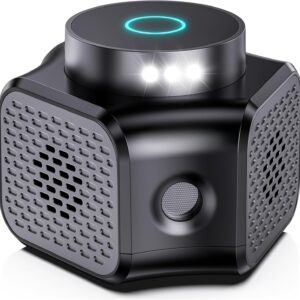
Reviews
There are no reviews yet.